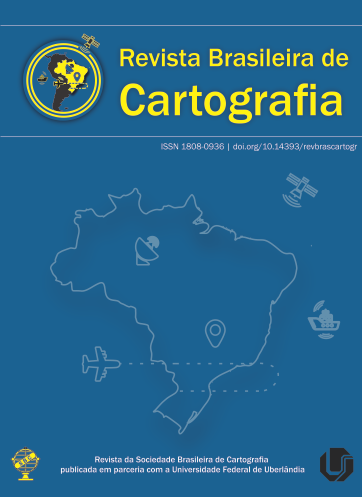Análise multitemporal do uso e cobertura da terra na Amazônia: A expansão da Agricultura de Larga Escala na Bacia do Rio Curuá-Una
Conteúdo do artigo principal
Resumo
A expansão da soja tem gerado importantes mudanças na Amazônia brasileira devido a processos de concentração de terras, homogeneização da paisagem e ao avanço sobre outras formas de produção. No Pará, esse processo ocorre mais intensamente nos municípios de Santarém, Belterra e Mojuí dos Campos, que integram a bacia do rio Curuá-Una. Esse estudo se propõe a analisar dinâmicas de uso e cobertura da terra para o período de 2000 a 2019 na bacia do Rio Curuá-Una, observando sobre quais classes a Agricultura de Larga Escala (AGLE) se expandiu. As atuais bases de dados de uso e cobertura da terra da Amazônia não contemplam a Agricultura de Pequena Escala (AGPE). Para incluir essa classe, fez-se uso de imagens TM/OLI/Landsat, técnicas de segmentação multirresolução e classificação orientada à objeto. Para a análise das dinâmicas da AGLE utilizou-se matrizes de transição para os períodos de 2000-2010, 2010-2019 e 2000-2019. Como resultado, observou-se um ganho de área da AGLE no período de 2000-2019, de 23 km² para 1.093 km². O período de 2000-2010 foi o que apresentou maior ganho (25%). A expansão da AGLE se deu primordialmente sobre áreas de pastagens (38%), vegetação secundária (31%), floresta (27%) e AGPE (2%). Cerca de 25% da área de AGPE de 2000 foi convertida para AGLE em 2019. Essa proporção pode ser ainda maior, pois parte da vegetação secundária convertida para AGLE, compõe o sistema de pousio da AGPE. Esses resultados reforçam a importância de se estabelecer políticas púbicas que valorizem e fortaleçam a economia local.
Downloads
Detalhes do artigo
Seção

Esta obra está licenciado com uma Licença Creative Commons Attribution 3.0 Unported License.
Autores que publicam nesta revista concordam com os seguintes termos:
- Autores mantém os direitos autorais e concedem à revista o direito de primeira publicação, com o trabalho simultaneamente licenciado sob a Licença Creative Commons Atribuição que permite o compartilhamento do trabalho com reconhecimento da autoria e publicação inicial nesta revista.
- Autores têm autorização para assumir contratos adicionais separadamente, para distribuição não-exclusiva da versão do trabalho publicada nesta revista (ex.: publicar em repositório institucional ou como capítulo de livro), com reconhecimento de autoria e publicação inicial nesta revista.
- Autores têm permissão e são estimulados a publicar e distribuir seu trabalho online (ex.: em repositórios institucionais ou na sua página pessoal) a qualquer ponto antes ou durante o processo editorial, já que isso pode gerar alterações produtivas, bem como aumentar o impacto e a citação do trabalho publicado (veja "O Efeito do Acesso Aberto").





